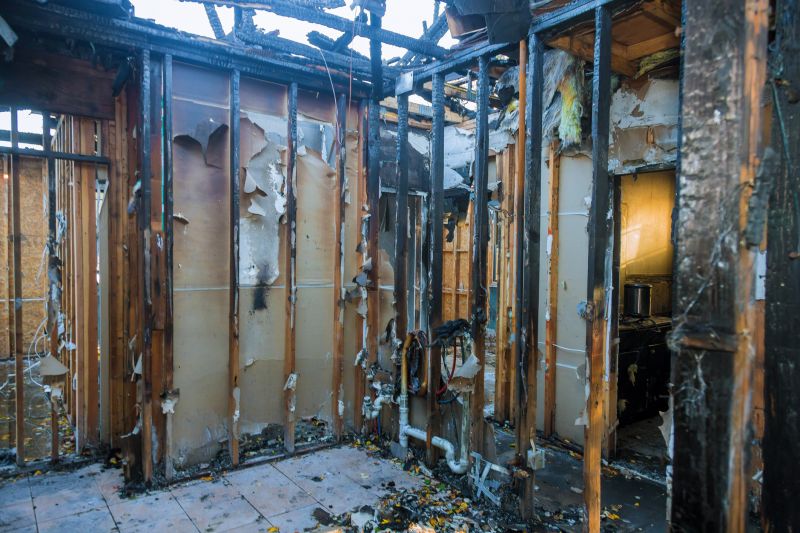Leading Fire Restoration Supplies To Speed Up Recovery
Equip yourself with proven products that facilitate faster and more efficient fire damage restoration efforts.
 Fire restoration products are essential tools and materials used to address the aftermath of fire damage in residential, commercial, and industrial settings. These products help mitigate smoke and soot residues, repair structural damage, and restore the affected environment to a safe and habitable condition. When dealing with fire damage, it is crucial to select appropriate products that can effectively clean, deodorize, and rebuild while ensuring safety and compliance with restoration standards.
Fire restoration products are essential tools and materials used to address the aftermath of fire damage in residential, commercial, and industrial settings. These products help mitigate smoke and soot residues, repair structural damage, and restore the affected environment to a safe and habitable condition. When dealing with fire damage, it is crucial to select appropriate products that can effectively clean, deodorize, and rebuild while ensuring safety and compliance with restoration standards.
Top Overall Option
Multi-Purpose Fire Damage Restoration Kit
A comprehensive kit that includes cleaning agents, odor neutralizers, surface repair compounds, and safety equipment, designed to address various aspects of fire damage restoration efficiently. It offers versatility and convenience for both professionals and DIY restorers seeking an all-in-one solution.
Types of Products For Fire Restorations
Soot and Smoke Cleaners
Specialized cleaning agents formulated to remove soot and smoke residues from surfaces and materials.
Odor Neutralizers
Products designed to eliminate persistent smoke odors and improve indoor air quality.
Fire-Resistant Drywall
Special drywall designed to withstand heat and prevent fire spread within walls.
Sealants and Primers
Materials used to seal surfaces and prepare them for repainting or further repairs.
Patching Compounds
Repair materials for fixing holes, cracks, and structural damages caused by fire.
Air Scrubbers
Equipment that filters airborne particles and odors, improving indoor air quality during restoration.
Fire-Resistant Insulation
Insulation materials that provide additional fire resistance to building structures.
Fire-Resistant Coatings
Protective coatings applied to surfaces to enhance fire resistance and delay damage.
Electrostatic Surface Cleaners
Tools that use electrostatic charge to attract and remove soot and dust particles.
Dehumidifiers and Air Dryers
Equipment to control moisture levels and facilitate drying of affected areas.
Personal Protective Equipment
Safety gear such as masks, gloves, and coveralls for workers handling fire restoration tasks.
Fire-Resistant Doors and Windows
Structural elements that help contain fire and prevent its spread within buildings.
Structural Reinforcement Materials
Products used to strengthen and stabilize compromised structures after fire damage.
Thermal Barriers
Materials that provide insulation and thermal protection to vulnerable areas.
Cleaning Wipes and Cloths
Convenient cleaning tools for quick soot removal and surface preparation.
Fire Damage Assessment Tools
Equipment and kits designed to evaluate the extent of fire damage accurately.
Popular Choices
Highly sought-after products for neutralizing strong smoke odors in affected spaces.
Effective tools for dry soot removal from various surfaces without additional chemicals.
Versatile spray formulations used for cleaning and deodorizing fire-affected areas.
Concentrated cleaners designed to tackle tough soot and residue buildup.
Devices popular for filtering airborne particles and reducing smoke-related odors.
Prefabricated panels used to quickly restore fire-damaged walls with added safety features.
Portable products appreciated for their ability to absorb lingering smoke smells.
Products frequently used to remove soot and grease from surfaces after fire incidents.
Popular for providing a comprehensive evaluation of damage extent and necessary repairs.
High-performance tapes used for sealing cracks and joints affected by fire.
Commonly used to insulate and protect areas vulnerable to fire spread.
Devices that disperse deodorizing agents to neutralize smoke odors in large spaces.
Tools favored for detailed cleaning of soot from textured surfaces.
Coatings used to enhance the fire resistance of interior and exterior surfaces.
Equipment that accelerates drying of water-damaged areas following fire suppression efforts.
Absorbent materials used to clean up soot from delicate surfaces.
The restoration process often begins with thorough cleaning using specialized cleaning agents and soot removers to eliminate residues that can cause odors or further deterioration. Surface repair products such as sealants, patching compounds, and fire-resistant drywall are then used to rebuild damaged areas. Additionally, odor neutralizers and air scrubbers play a vital role in removing persistent smoke odors, improving air quality, and creating a healthier indoor environment.
Choosing the right products depends on the extent of the damage, the materials involved, and the specific needs of the restoration project. It is important to consider the compatibility of products with existing surfaces, safety precautions during application, and the effectiveness of products in reducing odors and preventing future issues. Properly selected fire restoration products can significantly streamline the recovery process, reduce long-term damage, and promote a safer living or working space after a fire incident.
Key Buying Considerations
- Assess the extent of fire and smoke damage to determine the appropriate products.
- Ensure compatibility of cleaning agents with the surfaces and materials involved.
- Prioritize products that offer effective odor neutralization to improve indoor air quality.
- Consider safety features and proper handling instructions for chemical products.
- Evaluate the drying and curing times to align with project timelines.
- Choose fire-resistant materials for structural repairs to enhance safety.
- Opt for versatile products that can address multiple aspects of restoration in one package.
- Review product certifications and compliance with safety standards.
- Factor in the size and scope of the affected area to select suitable equipment and supplies.
- Look for products with positive user feedback and proven effectiveness in similar scenarios.
- Consider environmental conditions such as humidity and temperature during application.
- Determine if professional-grade tools are necessary for large or complex damage.
- Check for ease of use and the availability of application accessories.
- Estimate the budget and compare product costs with expected restoration needs.
- Plan for ongoing maintenance or replacement of restoration supplies as needed.
